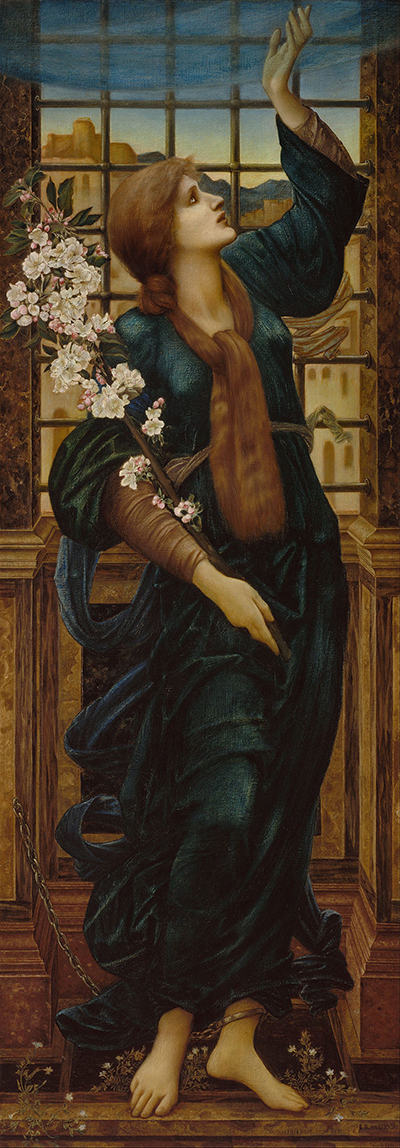Hope, a late oil painting, was executed by Edward Burne-Jones, a Pre-Raphaelite artist. Edward painted it on commission in 1896 for the Whitinsville, Massachusetts-based Mrs George Marston Whitin.
Mrs Whitin initially requested a portrait of a dancing figure. However, Edward, devasted by the demise of his partner and long-time friend William Morris, started struggling with the work. He wrote to request if a portrait of Hope would be accepted as an alternative. The outcome was an allegory which was in the Renaissance style, with the bound representation of Hope reaching towards the sky despite her bars. Hope is based on Edward's 1871 watercolour. The watercolour is probably painted over Edward's original cartoon for a collection of stained glass paintings of the Christian virtues Charity, Hope and Faith for the furnishings and decorative arts retailer and manufacturer Morris, Marshall, Faulkner & Co.
A 3-light window based on designs by Edwards was commissioned for Christ Church Cathedral nave. Also, these stained glass designs were used for the set of windows located at St Martin's Church, in Front Street, Brampton, Cumbria; Norfolk; and St Margaret's Church in the village Hopton-on-Sea. The lone female figure in the painting tends to remind the viewer of the graceful Botticelli women, while the painting's symbolic message is subtly, but effectively conveyed. In the painting, the slender figure is seen confined within a tight spac; a shackle on her ankle is chaining the woman to the ground, while she is reaching for the sky beyond and above the cage-like bars that are behind her. There's a branch of apple blossoms in her arms, which is the symbol of hope.
Edward exerted a significant influence on French painting. From 1889, the artist was influential among symbolist painters for France. His work inspired Swinburne's poetry: 1866 Poems & Ballads by Swinburne is dedicated to Edward. Three of Edward's studio assistants, Charles Fairfax Murray, T. M. Rooke and John Melhuish Strudwick, went on to thriving painting careers. From the 1890s onwards, he was also a strong influence on the Birmingham School of artists. BM&AG has the largest collection of Edward's works, including the 1897 large watercolour Star of Bethlehem, which was commissioned for the Gallery. Mrs Whitin's daughters donated Hope by Edward Burne-Jones to the Boston-based Museum of Fine Arts in her memory.




